Text
Gender in Video Games.
In this post, I will be further exploring the representation of females and males in video games as well as the effect those games/the people who play them have on them.
Representation in Games
First-person shooters, action games and sports games have been popular among boys ever since the early '90s. In 2012, the three categories combined were responsible for 58.8 percent of video game sales in North America.
We know that the usual suspects of moral panic; Call Of Duty, Doom and World of Warcraft, and we have heard it in the new’s stories before of reports linking killings to these games and being handed the bad wrap due to society’s larger view on video game culture and influence. But I believe that for Men especially that this type of representation stems back from other sources than just a lust for violence.
It is no accident that video game retailers plaster their walls with promotional posters of gun slinging heroes, but whilst they see this as putting across a positive role model, is this really how boys want to be represented? Whilst the class debate was going on, the voiced opinions on how males are represented in games didn’t seem so ideal. This was because of the forced power fantasy that the majority of male game characters portray. Games advertise violence as a means of peace and success but to have the only version of yourself that you get to see in a game as something so cruel and malevolent, even in the name of justice, isn’t a positive experience.
God of War:
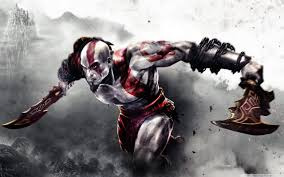
Gears of War
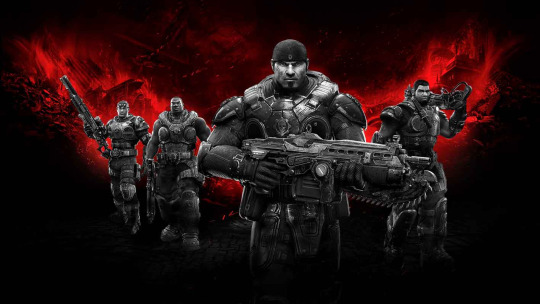
Despite having part of the character’s story revolve around some sort of violence, boys have the opportunity to be represented as human beings in games that acknowledge the emotions of the character.
Gears of War
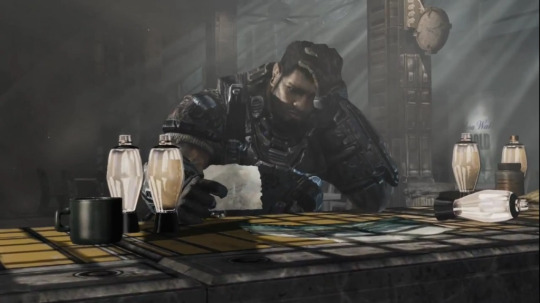
(Dom grieving for his wife) The Last of Us:
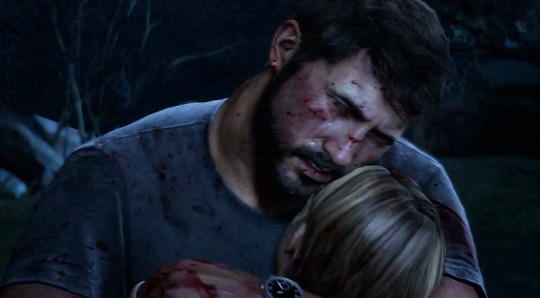
(Joel mourning his daughter) For girls, it’s a whole other story. Female characters were introduced into games not for representation but for visual appeal, either that or, if they’re a luckier, they’re a pawn in the main characters story. Lara Croft is a superb example. Whilst male characters had their main attraction be the big weapon they carried, or their grueling story which is shown through their character design, Lara Croft’s initial selling point was because she was ‘sexy’. And this was used to appeal to boys through attraction, rather than for girls through representation. But this isn’t the only game that’s done this through the history of games. Good examples are Street Fighter and Mortal Combat, where female fighter’s outfits are snipped and tucked in all the right places to make sure private areas are on display. This is where character designers have gone with sexualisation over practicality, and is, in my opinion, a cheap move. Even just by searching ‘male/female mortal kombat characters’, the design differences are obvious.
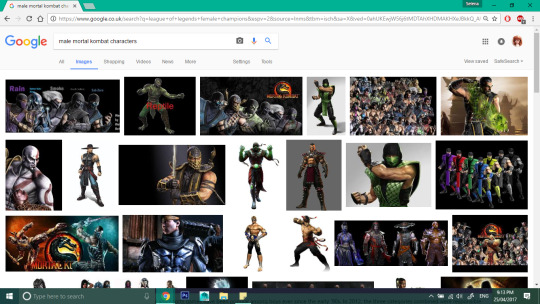
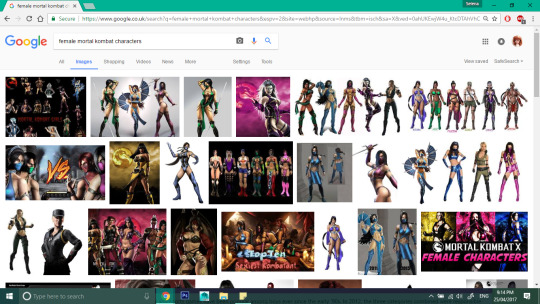
But this is because these characters weren’t created to represent women. It doesn’t end at character design, because female fighting noises are just as bad. Whilst men grunt and growl as though genuinely in a fight, girls let out a moan or a purr as though doing nothing of the sort. This is to further the appeal for boys, not only having the visuals be attractive but also have the noises be perverse, even when it comes to young characters like Sarah in Final Fantasy XIII or Annie in League of Legends. Though, whilst time has gone by, the representation of women is gradually improving and these strong roles aren’t created with the intention of using sex to sell. Samus (Metroid Prime)
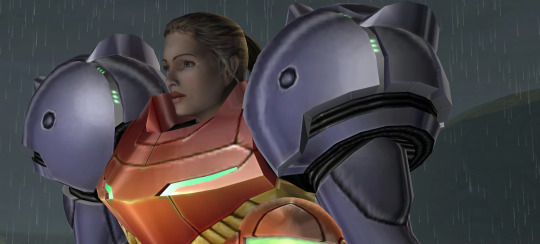
Shepard (Mass Effect)
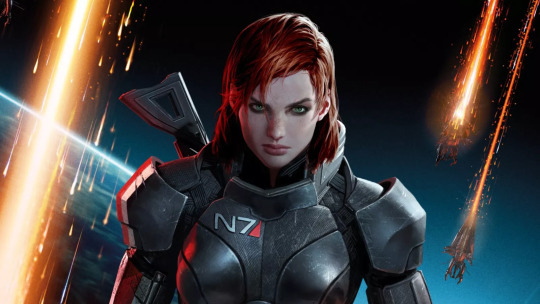
Zelda (Legend of Zelda Franchise)
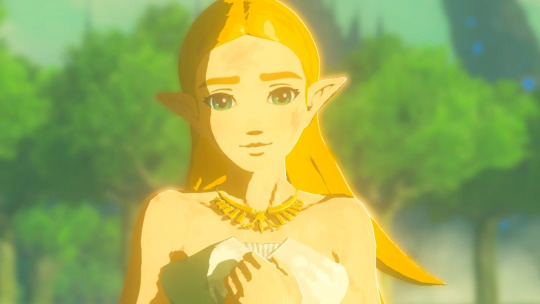
BUT game companies aren’t always to blame. Their audiences can be just as bad, if not worse. Though, in more recent years, more females have made their way into the gaming industry and female audiences are being acknowledged, it’s still something that’s in the process of improving; just like the design of female characters. For years, the gaming community has used the term ‘girl gamer’ to harass girls over a number of platforms. A lot of people blame in on the ‘cam girl’ side of twitch but that industry taking advantage of streaming came a long time after the harassment of girls who play games. And this isn’t just a ‘oh games are for boys’ sort of argument, it’s aggressive and perverse to the point where, even over text or headset a girl can be verbally abused for simply being a girl who’s ‘some how’ better at gaming than the boys she’s playing against to being deemed a ‘whore’ or ‘slut’ for merely existing within the gaming community. Whilst this is the communities fault, it all stems back to how females are represented in games - as sex toys. Whilst the gaming industry and community still have these flaws against the representation of females and females in the community, times are changing and they’re definitely changing for the better. And they’re also changes for the males, as games are changing to be more narrative heavy and have focus on characters over action. And for everyone, narrative and character writing is improving and characters will be represented as human and emotions will be shown fairly and truly.
2 notes
·
View notes
Text
Diversity Within Games.
Over the years, the gaming industry has adapted to appeal to a specified audience, and just like any platform of media, will create characters which their ideal audience can relate to, to some degree. In this post, the focus will be on overall diversity (gender, race, appearance) and will be followed by a more specific post on gender in video games.
Who is the target audience of games?
Whilst more women statistically play games, the game industry has targeted young males as their audience for a long time. This is down to the game crash (1983), as the loss of money due to over production of failing games caused companies to struggle incredibly. By establishing an audience, this would help game companies make games that have a goal and an overall appeal which was targeted at young males. On top of the game crash, the reasoning behind a male audience is also due to the fact that those making games were majority male and made games that appealed to them personally. _____________________________________________________________
Looking into games with an overall perspective, it’s easy to say that the majority of characters are white males by default, despite if the game is made in the east or the west. This doesn’t seem to be done as a malicious act to prevent people who don’t fit into this category from playing their games, but on a grand scale (especially in games with a large amount of characters), can cause some issues with the fact that no one but this specific character is being represented.
Best games of 1980:
1. Super Mario Bros (1985) - default protagonist 2. Tetris (1984-89) 3. Duck Hunt (1984) 4. Super Mario Land (1989) - default protagonist 5. Super Mario Bros 3 (1988) - default protagonist 6. Super Mario Bros 2 (1988) - default protagonist 7. Pac-Man (1982) 8. The Legend of Zelda (1986) - default protagonist 9. The Legend of Zelda 2 (1987) - default protagonist 10. Excitebike (1984) 10. Pitfall! (1982) - default protagonist
Best games of 2000:
1. Pokemon Silver (2000) - customisable character 2. Pokemon Gold (2000) - customisable character 3. Pokemon Yellow (1999) - default protagonist 4. Pokemon Stadium (2000) 5. The Sims (2000) - customisable character 6. Tony Hawk's Pro Skater 2 (2000) 7. The Legend of Zelda: Majora's Mask (2000) - default protagonist 8. Tony Hawk's Pro Skater (1999) - default protagonist 9. Gran Turismo 2 (2000) 10. Pokemon Blue (1998) - default protagonist
Best video games of 2016:
1. FIFA 17 (2016) 2. Call Of Duty: Infinite Warfare (2016) - default protagonist 3. Battlefield 1 (2016) - default protagonist 4. The Division (2015) - default protagonist 5. Grand Theft Auto V (2013) - default protagonist 6. Uncharted 4: A Thief’s End (2016) - default protagonist 7. Call Of Duty: Black Ops III (2015) - default protagonist 8. Watch Dogs 2 (2016) - default protagonist 9. Overwatch (2016) - variety choice 10. Forza Horizon 3 (2016)
Whilst this is only a brief overview of only a selection of games, it’s easy to notice the recurring ‘default protagonist’, though it’s also clear that some games did a turn around and started to offer customisable characters.
What games are the worst for diversity?
A lot of FPS games Early Atari games such as Custer’s Revenge, Beat ‘em and Eat ‘em GTA franchise (mainly for women) Crackdown (though done in an ironic sense) (mainly older games)
What games are good for diversity?
MMOs such as World of Warcraft MOBAs such as Overwatch (games that want to offer a large variety)
1 note
·
View note
Text
A Brief Look into Indie Artists and Concept Design for Indie Games.
Within the gaming industry, there is two significant halves; AAA and indie. Between the two, there’s an incredible amount of differences, things such as budget, size and recognition. Aspects like this will clearly effect the productiveness and the quality of work, but this isn’t to say that a company with a much smaller budget is to make a game of bad quality but to suggest that there is limitations on what they are able to produce. Indie groups are a great deal smaller than AAA and have scarce budget, often funded by themselves and their audience, whilst AAA are funded by promoters and sponsors.
Taking a look into the art of indie games, I will be comparing it to that of AAA titles and discussing my views on their differences and similarities.
Banner Saga (Stoic Studio) - Arnie Jorgensen
concept art -

in game -
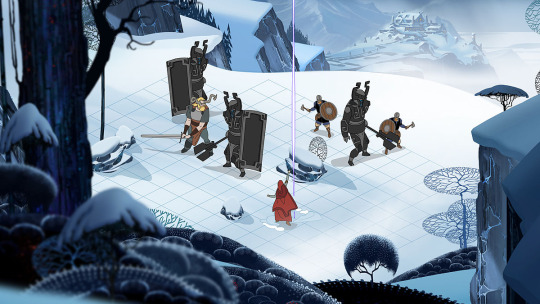
Transistor (Supergiant Games) - Jen Zee
concept -
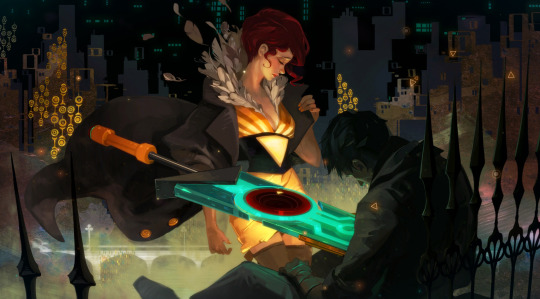
in game -
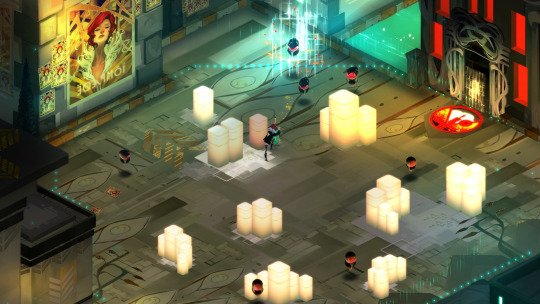
Braid - Number None Inc., Hothead Games - Daniel Hellman
concept -
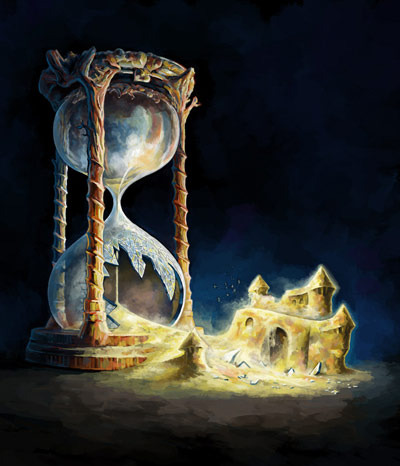
in game -
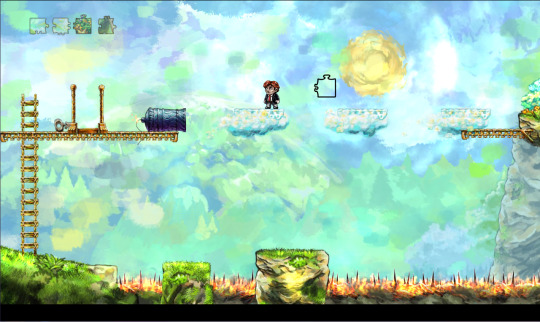
Journey (thatgamecompany) - Matt Nava
concept -

in game -
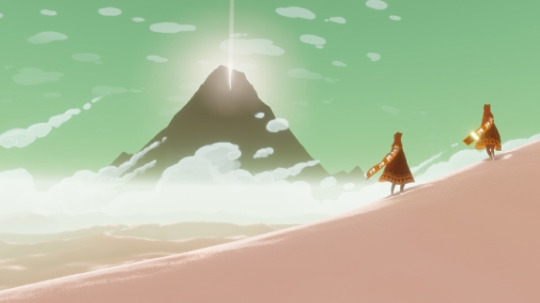
Limbo (Playdead) - Arnt Jensen
concept -
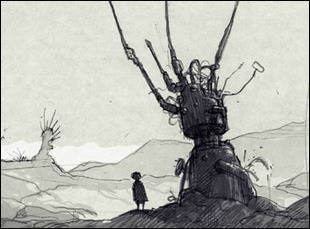
in game -
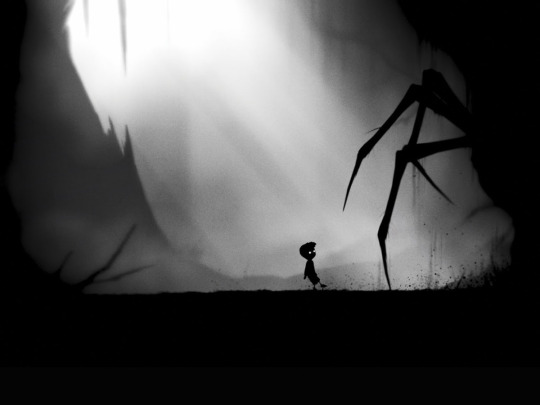
Using my previous post on western AAA game artists, I will share my thoughts and comparison.
One of the biggest things I would like to point out is the difference between concept and in game design. Whilst AAA companies will have a large variety of in game artists, along with outside concept artists coming in to work on production art, indie companies will likely use the same artist (s) for their in game and production design. Because of this, indie concept art tends to share the same style without much variation between concepts and the final product. Another con of the AAA side of the industry is comfort zones for style as to not unsettle an expecting audience, so these titles tend to stick with either realism or an established style. Indie games on the other hand seem to have more leeway when it comes to changing visuals up. This could be due to smaller audiences or the mere fact that people seeing something as ‘indie’ makes them less fixated on standards and lets them have less burdening expectations.
4 notes
·
View notes
Text
Questions About Game Artists.
Can you find any common themes, approaches & ideas?
Western -
Looking over concept art and in game visuals in western games, I have noticed quite a few similarities between different artists and game studios. For instance, western games are more likely to look gritty and dark, especially in concept art. Whilst some manage to stand out, the majority of images I have come across have a very dirty tone to the image, having used a large quantity of dark colours, even when lighting is vibrant. Though, saying this, whilst colour schemes tend to vary in shades of one tone rather than be a large variety, western artists seem to use splashes of bright colour, or a tone which will stand out a little more against a dulled pallet as to give the image just that extra push to be eye catching in specific areas. A lot of games seem to revolve around the same, large and vast atmostphere with clean sci-fi which is clearly inspired by the work of Ralph Mcquarrie. His influence isn’t only seen within sci-fi, as it seems to have branched out into general gun designs as well as armour, taking bits and pieces of the clean cut style he worked in. These games also like to have lone characters, ones that often mimic the pose of ‘The Wanderer of the Sea of Fog’, as it allows them to depict the narrative, which is often a replica of the Sublime (man VS nature/fate). Western artists have mostly stayed within a limited art style of realism, never quite veering too far away, even when it comes to more stylised studios such as Rockstar or Valve. With western games staying so close to realism, I feel that they strive to always have their characters represent those who play the games in some sense. Characters costumes tend to be pretty fashion forward, staying within trends and rarely being something you wouldn’t see in every day life and even those such as fantasy and sci-fi tend to stay very close to real fashion, as well as humanoid features.
Eastern - Whilst eastern companies such as CapCom and Nintendo have a different approach to art and visuals than western companies, their processes have similar traits to each other. Just like with western games, this will be due to cultural art preferences and how art has developed within a certain region. I have noticed that there is far less environmental concept art for eastern games, as they tend to let their characters do the job of expressing their game. Whilst the majority of art seems to stay within the ‘manga’ style, eastern artists do tend to show more of a variety within their art styles, sometimes sliding across the spectrum of cartoon and realism. Their proportions, whilst exaggerated, seem to have a whole lot more detail put into them, as well as their costume design. In my opinion, eastern games express a whole lot more through their character designs than western games do, as they seem more thought out and tend to have appearances which represent their backstory and narrative. Colour wise, I have noticed that eastern games love to use bold and vibrant colours, both on characters and environments. Everything seems to just pop out of the screen with a variety of bright shades, all whilst working alongside each other without clashing or seeming a little too much. Concept art for eastern games tends to be group shots or collages of numerous characters, as their games tend to be set around a community of characters rather than a lone soldier.
Is it uniquely western/eastern?
Overall, I would say that both sides are unique, as their styles and techniques have been developed differently and have formed from individual styles. Throughout history, western art has always strived for realism, whilst eastern art has always had free range of self expression.
Though, I will make the argument that eastern art has more of a unique style, as not only have they developed their technique to realism, but have also kept a lot of their history within their current art styles, such as the inkwash styles used for Metal Gear Solid, or how Monster Hunter implements block print looking icons. They express much more range in art styles, which are unique to their location. And whilst this isn’t uniquely eastern, they seem to have more freedom in variety of style, for example, throughout the Legend of Zelda games, the art style has always changed, whilst western games, even not in the same franchise but company, like Rockstar, tend to stay within their comfort zone.
How do they differ as art styles?
As previously mentioned, the overall styles of western and eastern art are approached as two separate things; western maintaining realism whilst eastern explores a more ‘anime’ look which can lean towards realism when it seems fit. Also, colour wise, the appearance of art in games is very different as eastern games tend to be far more vibrant and loud whilst western games are quite tame in their colour scheming, keeping to a limited palette with splashes of colour most of the time. Eastern games seem to work with 2D far more than western games do, giving their art an almost traditional feel.
0 notes
Text
Western Game Artists
With the western game industry being so much more commercialised and with its rising popularity, artists are more known and expressive among known social media sites. Though, an artists name is more likely to be known when they reach a ‘celebrity’ level within the industry, rather than every artist being known. Most will be known through their own efforts of work presented online.
Stephen Bliss - Bully, GTA 3
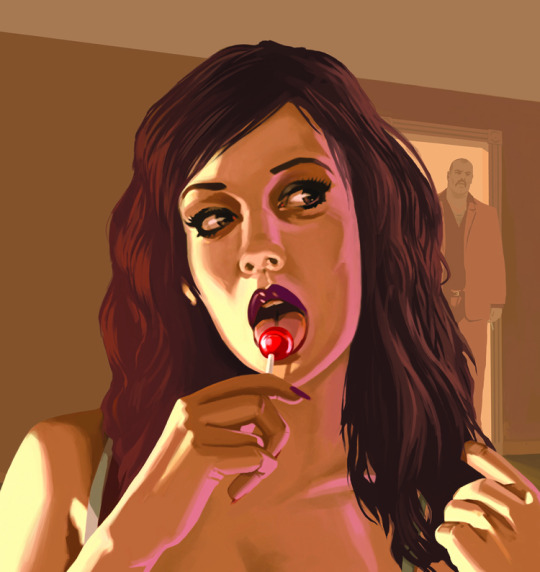

Brian Wood - GTA, Max Payne, Manhunt
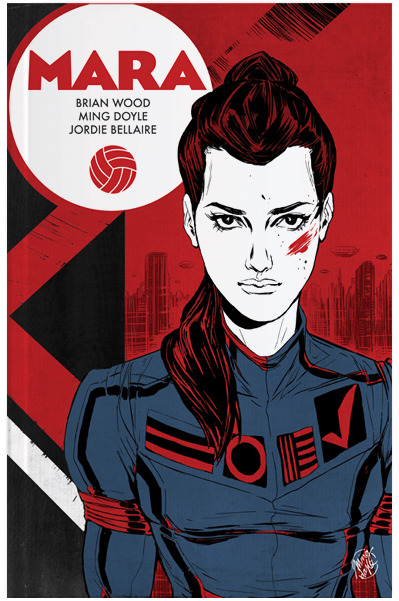
Roxie Vizcarra - LA Noire, Red Dead Redemption, GTA 5
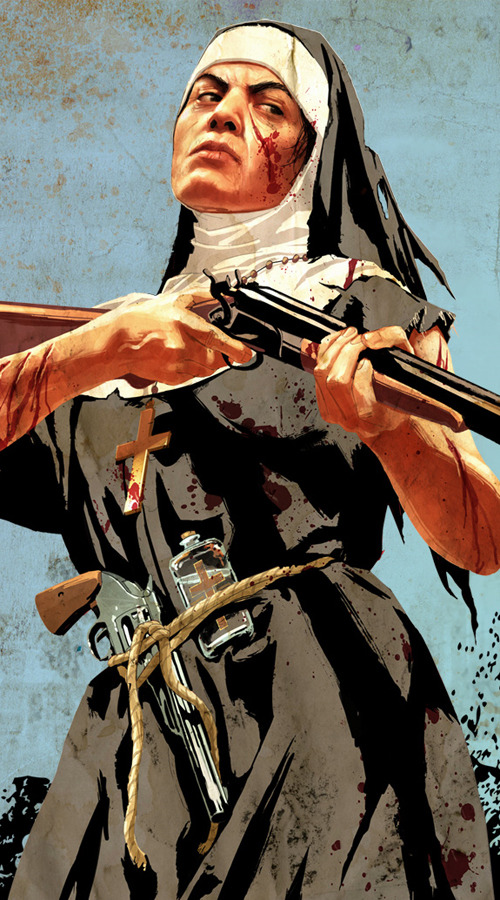
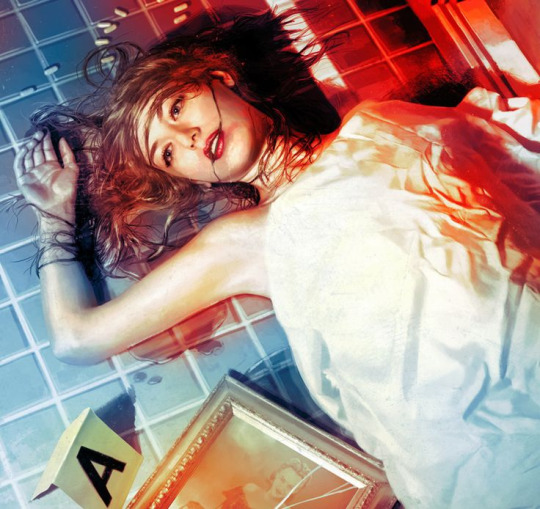
Hethe Srodawa - Red Dead Redemption
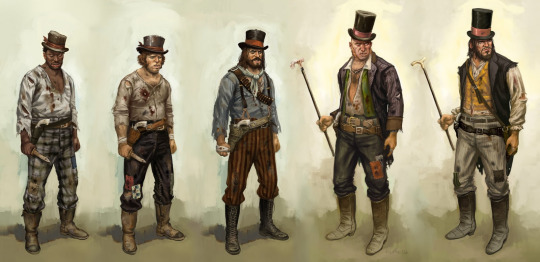
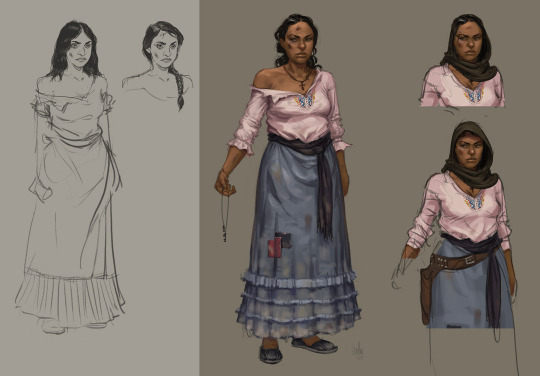
Nicolas ‘Sparth’ Bouvier - Halo 4, Rage, AC, Alone in the Dark
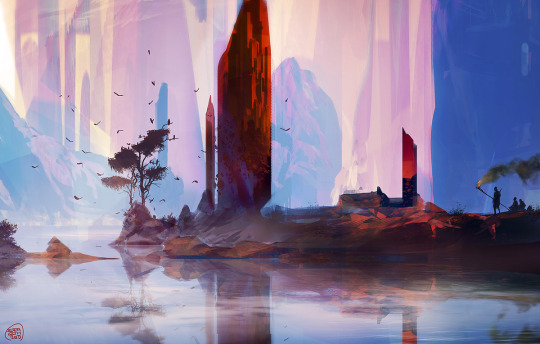
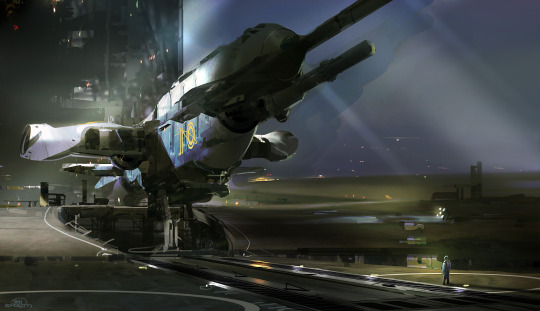
Craig Mullins - AC, Halo 1 & 2, Bioshock, Shadows Dogma
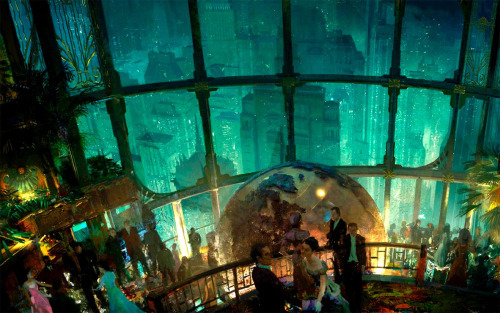

Donglu Yu - AC, Unity, Farcry 4

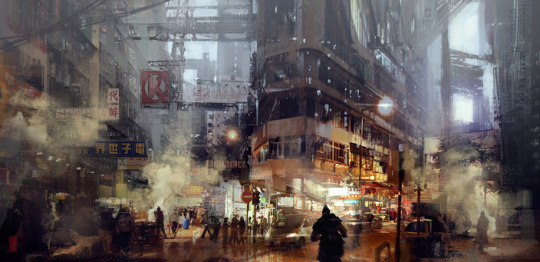
Adam Adomowicz - Fall Out 3, Skyrim, Elder Scrolls, Nightcaster
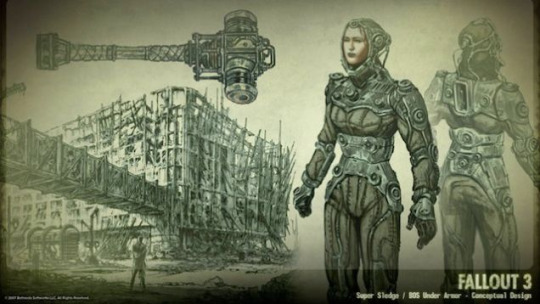
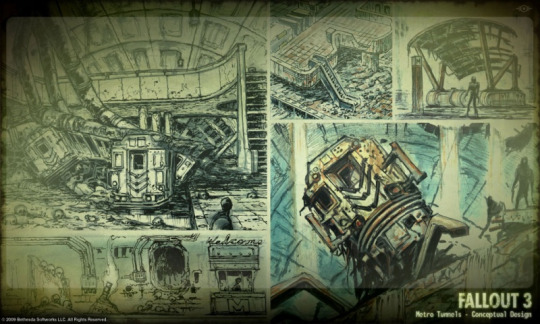
Matt Rhodes - Mass Effect, Dragon Age
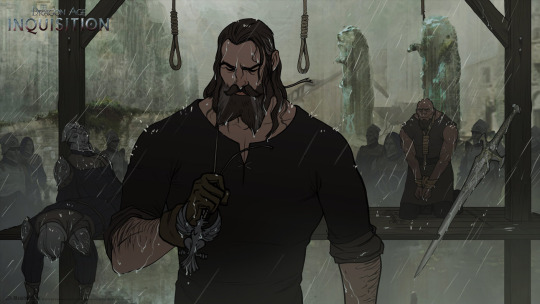
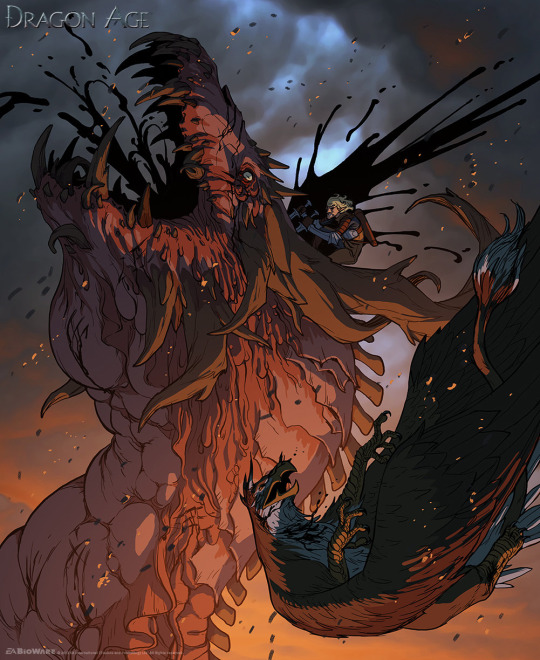
1 note
·
View note
Text
Eastern Game Artists
Overall, the game industry in eastern countries is quite different to what we have in the west as a lot of workers are kept anonymous and have little credit to their name when it comes to their contribution to a game. This isn’t only due to secrecy but also to do with language barriers, as the predominantly western industry uses different social media and communication is limited. Artists: Akiman Chun-Li - Forgotten worlds, Captain Commando, Streetfighter Alpha 2 & 3, Powerstone, Final Fight.

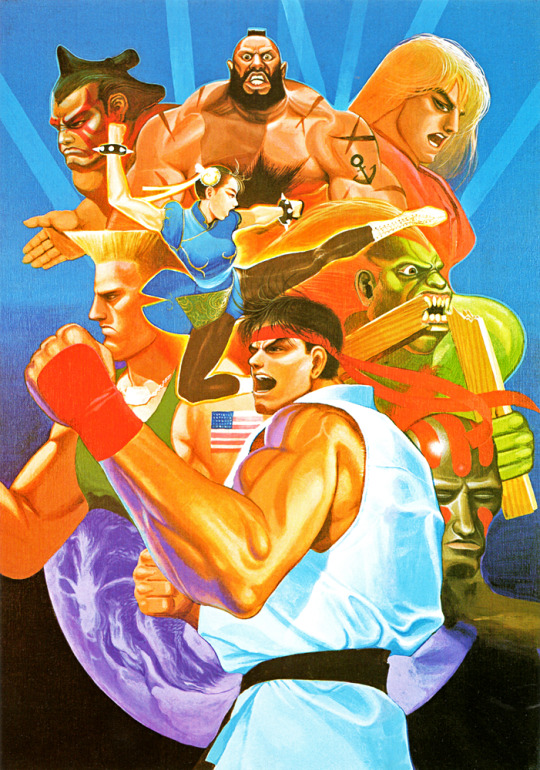
Bengus - Alien VS Predator arcade, Marvel VS CapCom
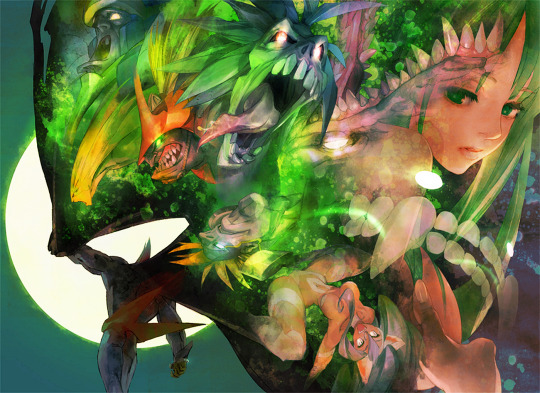
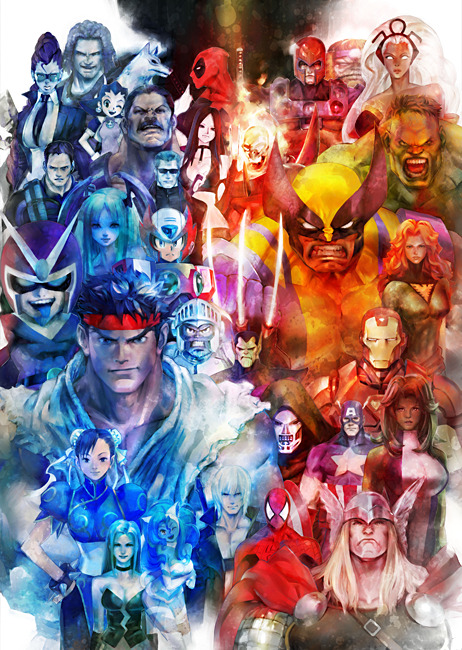
Kinu Nishimura - Street Fighter 3, King of Dragons, Rival School, Marvel VS CapCom 3
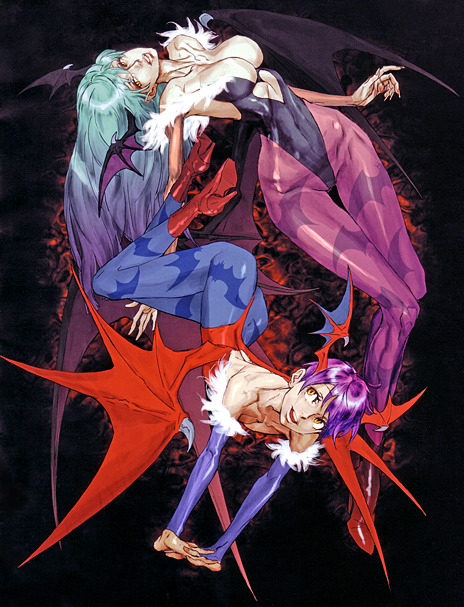

Kozaki Yusuke - Speed Grapher, No More Heroes, Ace Combat, Fire Emblem
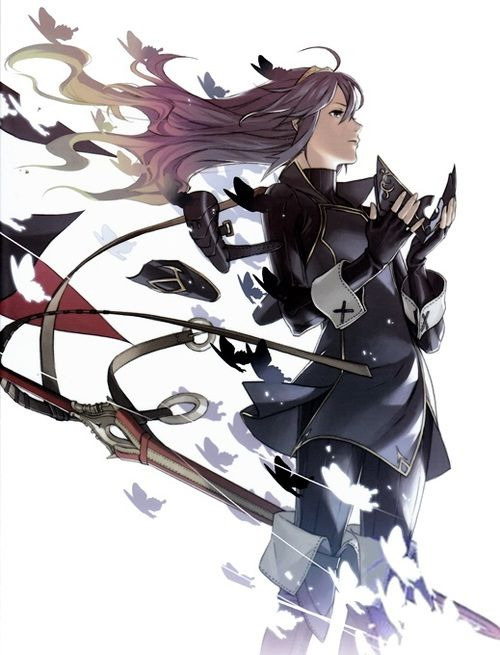

Masahiro Ito - Silent Hill, Night Cry
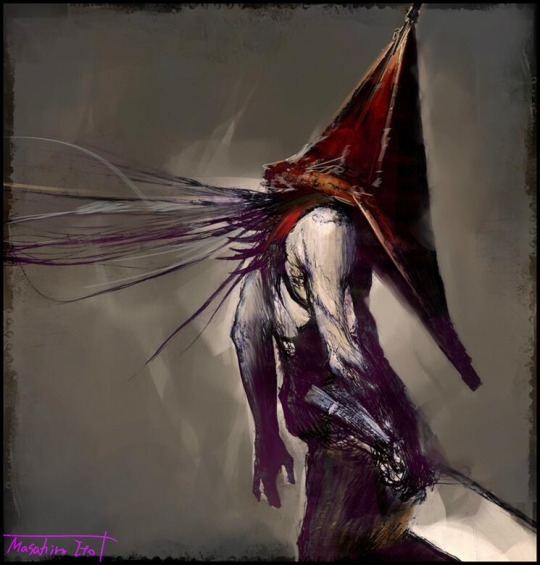
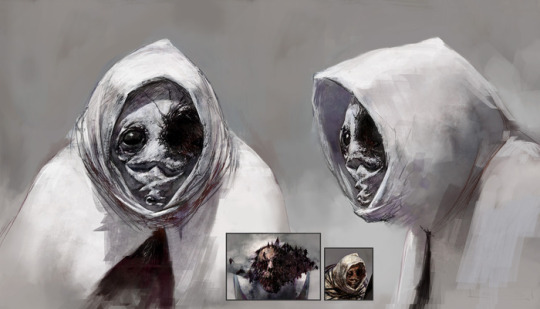
Shigenori Soejima - Persona, Catherine
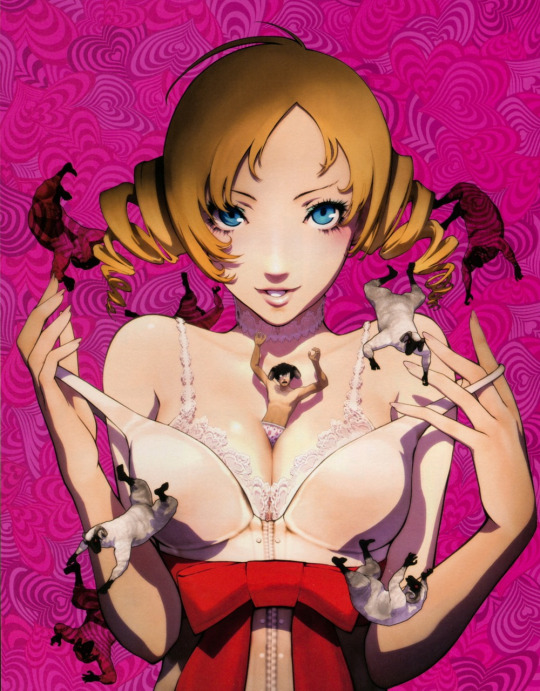
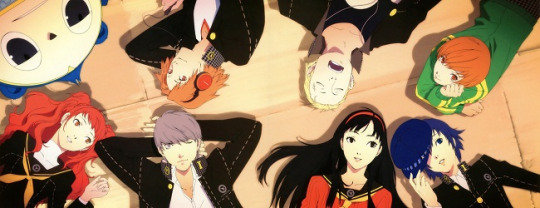
Yoji Shinkawa - Metal Gear Solid, Death Stranding
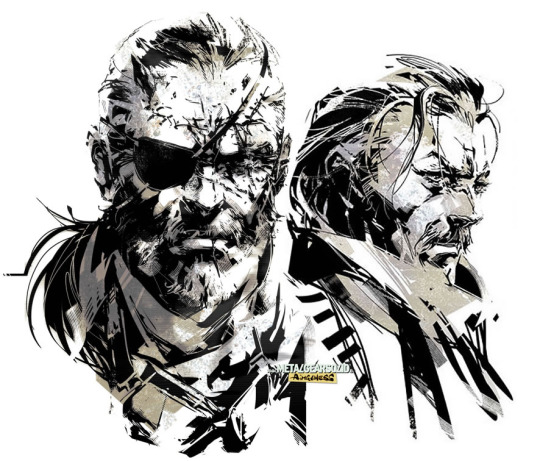
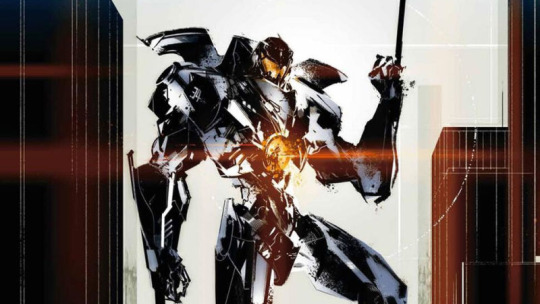
Yoshida Akihiko - Vampire Hunter D, Final Fantasy
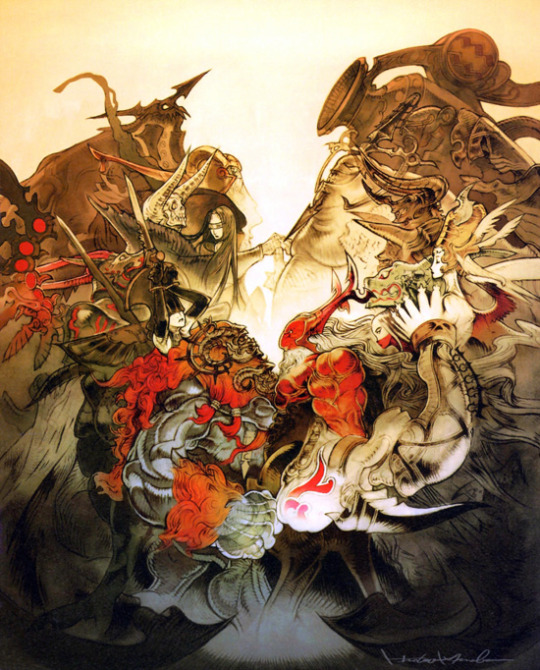
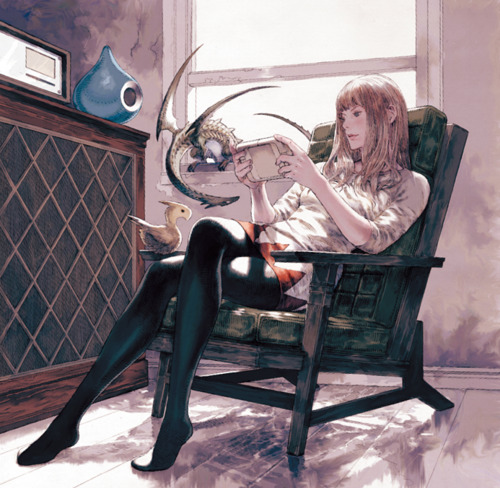
2 notes
·
View notes
Text
Movies of the 70′s and 80′s, and their influence on games.
Following on from my previous post, I will now be looking into games inspired by the visuals of a certain number of directors who were big in the 70′s and 80′s.
George Lucas: (Associations with Ralph McQuarrie)
Lucas’ most well known work from the time was Star Wars: A New Hope (1977), which was a movie which created a lasting impression and still stands as one of the best in history. Through the 80′s, two more films followed.
Games inspired:
Mass Effect, Halo, No Man’s Sky
Ridley Scott: (Associations with H.R Giger, Moebius, Ron Cobb and Syd Mead)
Ridley Scott's films of the time were Alien, Blade Runner and Black Hawk Down. Throughout his career, Scott has been credited for his work on visuals and cinematography as it’s always been one of his main attractions.
Games inspired:
Mass Effect, Dead Space series, Half Life, Metroid Prime, Contra
James Cameron:
Cameron followed on Scott’s work with Aliens, and also released Terminator, both which are considered classics and highly spoken about.
Games inspired: (not including inspired by Alien)
Duke Nukam, Crackdown, Doom, Gears of War
Michael Mann:
Whilst being known as the first critically acclaimed director to go digital, Michael Mann released Heat and Collateral during the time I am looking at.
Games inspired:
Hitman, Watchdogs, Infamous: The Second Son, Payday, LA Noir, GTA, The Swindle, Steam World Heist
1 note
·
View note
Text
Movies of the 70′s and 80′s, and their influence on games.
In this lecture, we were given the theory that movies of the 70′s and 80′s are the ones that have the most significant impact on the plot and visuals of video games, as this is what the generations that now make games were raised on.
We were then given four different films in which we have to find as many games inspired by the plot, and four directors who’s visuals have inspired the look of many games.
In this post, I’ll be covering the plot section.
Enter the Dragon (1973), dir. Robert Clause.
A criminal overlord, protected by a highly trained (martial arts) is to be brought to justice by a hero, who is also trained in the same skills by infiltrating a martial arts tournament. The hero will make his way through the army to then reach the final boss. Games inspired: Mortal Combat, Street Fighter, Blazblue, Guilty Gear, Virtua Fighter, Soul Calibur, Dead or Alive
Raiders of the Lost Ark (1981), dir. Steven Spielberg.
Ordinary person who secretly goes around the world in search for ancient artifacts (which usually have a supernatural origin). Games inspired: Lara Croft franchise, Uncharted, Temple Run, Monster Hunter franchise (partly), Zelda franchise, Prince of Persia
Die Hard (1988), dir. John McTierman.
Lone guy is trapped in a life risking situation where a criminal organisation are in control. He must go through progressively harder levels and collect needed items to eventually get to the main boss. Also is on a mission to save his wife.
Games inspired:
Bioshock franchise, Hitman, Dead Rising, Zelda franchise, Dishonoured, Virtues Last Reward, Zero Time Dilemma, Portal, Mario franchise, Sonic franchise
Commando (1985), dir. Mark L Lester.
Lone soldier with expert skills is brought out of retirement when a criminal organisation kill all of his friends and kidnap his daughter as bait.
Games inspired:
Metal Gear Solid, Halo, Kane and Lynch, Hitman, Bioshock Infinite
0 notes
Text
How Animation and Comics Have Influenced Video Games.
Throughout the development of the game industry, it’s taken inspiration from multiple art platforms as to grow and expand on what it is that they do. A big influence is animation and comics, as I believe this allowed games to see how characters can give a whole lot of personality to something and makes the person experiencing it more invested through certain aspects being relatable. Examples of game characters with very cartoony (eccentric) personalities are Sonic, Pitt, Duke Nukam (comics more than cartoon), Pokémon NPCs, Kazooie and Spyro. For visuals, I have chosen two games that have been influenced by the way animation and comic characters have been drawn through the years. These are not games which have taken existing characters and brought them into a game, but games that have simply used style and techniques.
My first example is Cup Head (Studio MDHR, tbr 2017), which is a beautifully inspired by early cartoons such as Max Fleinscher, the creator of Betty Boop and Popeye, and Walt Disney in works such as Steam BoatWillie.

(Cup Head)
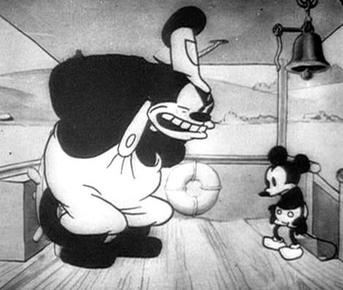
(Steamboat Willie)
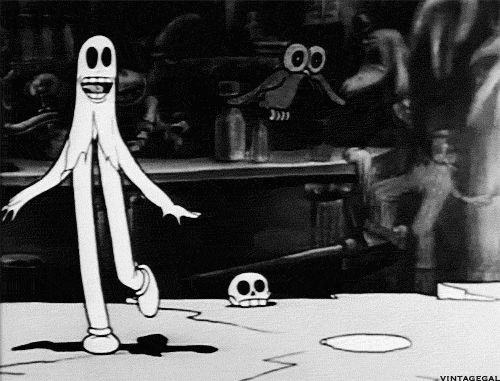
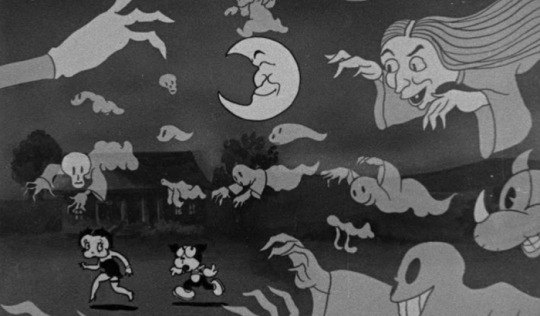
(Max Fleinscher) As for comics, a good example is Code Name S.T.E.A.M (Nintendo, 2015), which is a Japanese game heavily inspired by the artwork of American comics such as Captain America. Mixing this a little with Ukiyo-e block print, the visuals of this game are vibrant and eye catching, and are clearly inspired by the over exaggerated and characterised visuals of comics.
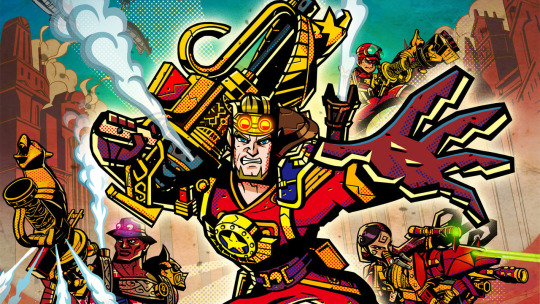
(Code Name S.T.E.A.M)
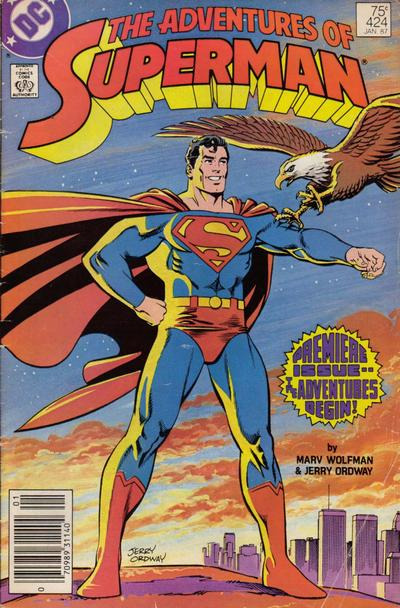
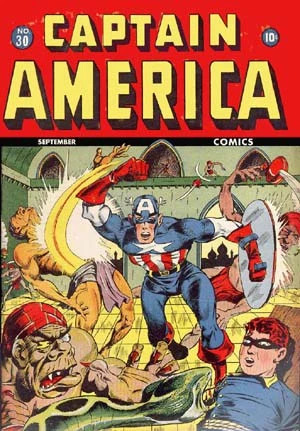
(examples of early comic visuals: Superman - Jerry Ordway, DC and Captain America - Joe Simon and Jack Kirby, Marvel.
When it comes to implementing actual existing characters into games, some good examples are games that simply revolve around a characters plot such as Deadpool (High Moon Studio, 2013). Though a great example of using existing characters is Kingdom Hearts (Squire Enix, a collaboration with Disney) as it is a mix between Disney’s universe and Final Fantasy, which gives the game two very contrasting visuals which work along side one another.
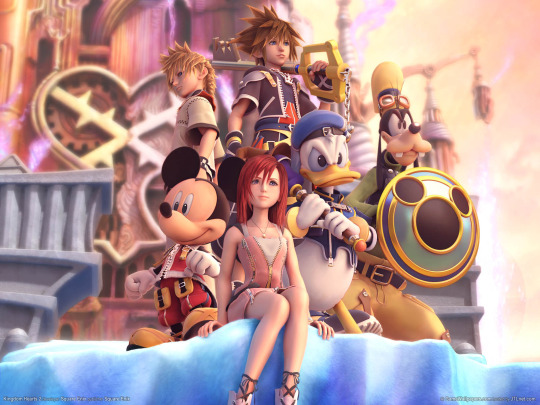
Visually, games have taken from comics just as much as animation, having developed a playable version of visual novels. These involve interactive game play, which helps build up the narrative and dialog heavy scenes (which tend to be still image or minimal animation) as to tell the story, the characters and outcome of the game being fixed and linear. Some great examples of visual novel games are Ace Attorney, Professor Layton, Zero Time Dilemma.
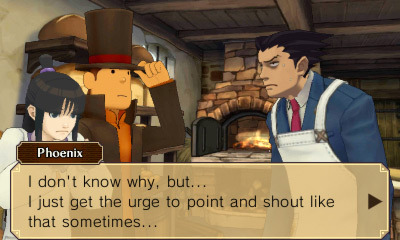
(Professor Layton VS Phoenix Wright Ace Attorney, Level-5 and Capcom, 2012)
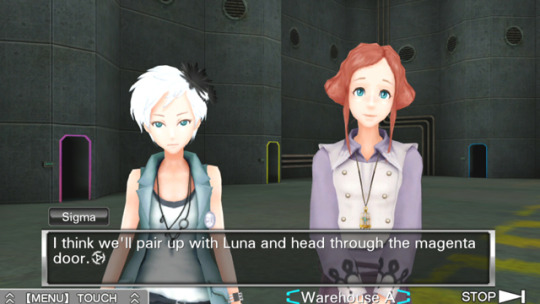
(Zero Time Dilemma, Spike Chunsoff, 2016)
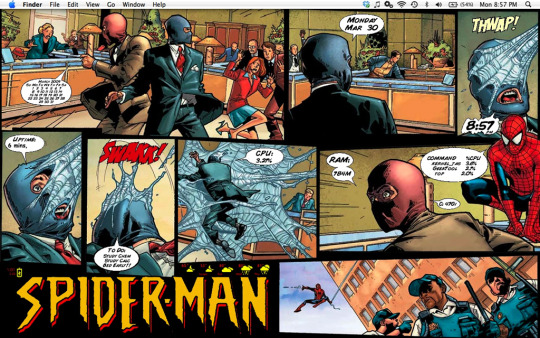
(Spider-Man, Marvel)
3 notes
·
View notes
Text
How Hip Hop Has Effected Video Games.
With Hip Hop being such a massive movement and the fact it covered numerous art forms, it’s impact and influence has been seen in multiple platforms. For games, each aspect of Hip Hop culture has been implemented in numerous ways, having been used to give a game personality, give it a unique look or to base a character around.
One of the most obvious games that revolves around Hip Hop culture is the Grand Theft Auto franchise. I have chosen to look into San Andreas and GTA 4 as I think these two have significant aspects which reflect Hip Hop. Starting off with the overall narrative and vibe of San Andreas, it is very much a reflection of the beginning of Hip Hop, as it is centered around living in rough neighborhoods which are brimming with gang violence. A feature of San Andreas is tagging, though is it veered more to representing a gang, rather than the character representing himself across cities. Tagging becomes a competition in San Andreas as the player competes with other gangs to have the most tags up, sometimes covering a preexisting one. With GTA 4, it’s mainly the characters who are inspired by the Hip Hop scene. As it’s set in modern day New York, the themes and personalities of characters are more based on the later Hip Hop scene of rappers and the more violent antics of gangs, as Hip Hop was originally seen (by those who regarded themselves as part of it) as something separate from the violence it was associated with and was merely artistic expression. An example of a character would be the antagonist Playboy X, who is a “wannabe-gangster”, who tries to present himself as the stereotypical portrayal of the Hip Hop youth. This being that his life revolves around drugs, arms dealing, gangs and overall violence, a perception which grew from fear that the Hip Hop generation where those committing crimes in New York subways but eventually became the scene for rap and grime.

Another good example of the influence of Hip Hop is Sega’s Jet Set Radio. This game is more influenced by the art of the subculture as the protagonist of the game is a tagger known as Beat (likely a reference to the music), with the goal of tagging as many areas as possible within the time limit.
With tagging being one of the foundations of Hip Hop, those who grew up doing graffiti would tag their name in as many places as possible, hoping to go ‘all city’, which is is pretty much the plot of Jet Set Radio.

Looking into the music of the culture, a good example is DJ Hero, as it is literally a game revolving around the music which was born during the beginning of the Hip Hop movement and has been endlessly growing and evolving within the rap scene. DJ Hero even had Grandmaster Flash and numerous other artists from within the music scene work on it and is played using a turntable system where the player has to learn to ‘scratch’ and mimic the way that Hip Hop music was and is still made.
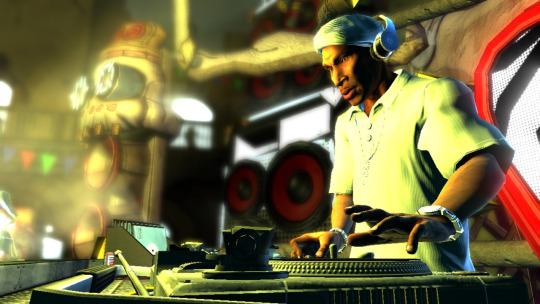
2 notes
·
View notes
Text
Hip Hop Culture.
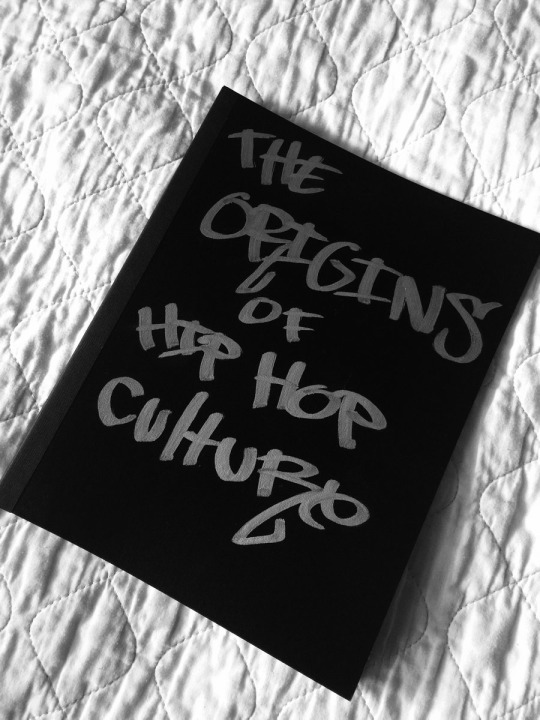
The subculture known as Hip Hop emerged in the late 1970′s, originating from the Bronx, NY, and revolved around the acts of graffiti, MCing, b-boying and DJing. Hip Hop culture is one of the biggest social movements and is one of the longest running cultures there is, having cultural critic Greg Tate state that the social movement is “ the only avant-garde still around, still delivering the shock of the new, and its got a shockable bourgeoisie, to boot.".
MCING & DJING
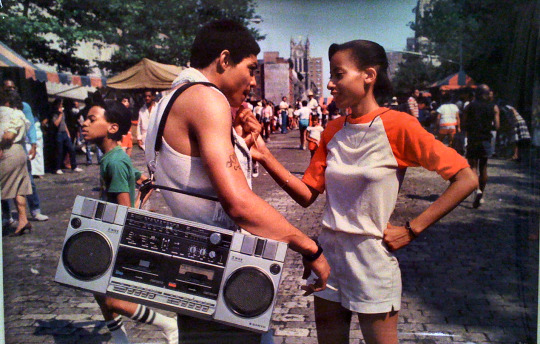
A major part of the Hip Hop culture was music, a genre which is still produced and split into what the rap industry is today. While most people began what would soon be known as MCing by simply free styling, DJ Kool Herc is credited as the ‘father’ of Hip Hop as he set the foundations of the genre as he was the first person to extend what was known as a ‘break’ in a song, as he noticed those who danced enjoyed those parts more. The music of this generation was a self expression of how they lived and the lifestyle that existed within the Bronx and among the youth. This would often involve themes of gang violence, going against the law and those who enforce it and the struggle of the younger generations. Whilst this was a way to express themselves, it caused the association of the youth and violence to seem less irrational.
B-BOYING / BREAKING
With the rise of Hip Hop music came b-boying, also known as breakdancing. Just as with music, DJ Kool Herc was massively involved in the creation of the style of dancing as it was his act of extending ‘breakbeats’ to a full length song, therefore giving people more opportunity to dance during his songs. Breaking became something a lot bigger than a hobby as it went from people dancing in small groups in the street to a competitive sport where teams would go against one another.
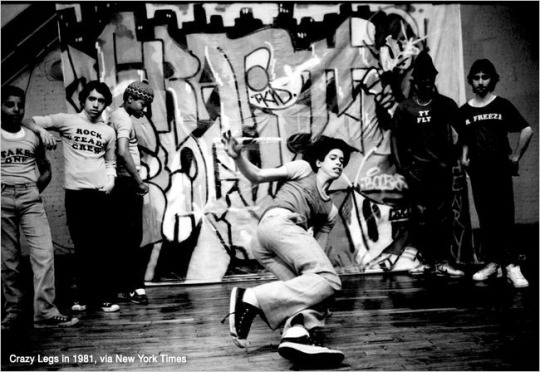
GRAFFITI
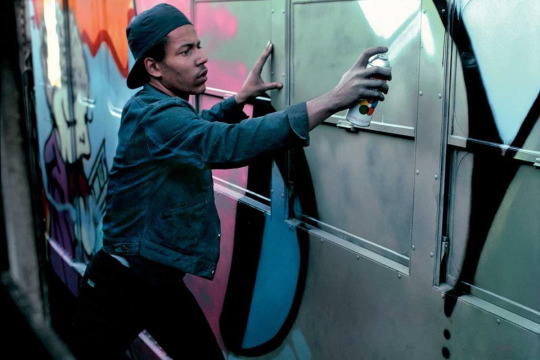
In it’s rise, this newborn culture was heavily criticised by the older generations as they blamed their behavior on boredom and associated those who were in the Hip Hop scene with the crime which happened in New Yorks train/subway stations as the early stages of tagging was mainly done on trains (known as bombing). Bombing was done as a way of having a persons tag travel across cities on the side of a train cart, as a common goal of most graffiti artists of the time was to go ‘all city’, which was to have their tag known everywhere. Despite the backlash the Hip Hop scene received, those who were part of it stood their ground in believing what they were doing was something creative and fun, and the crime of graffiti was nothing in comparison to everything else going on.

1 note
·
View note
Text
DD2451 -The Process of Making My Diorama
Making the base model in Maya:
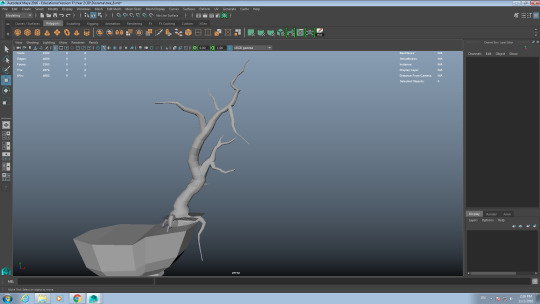
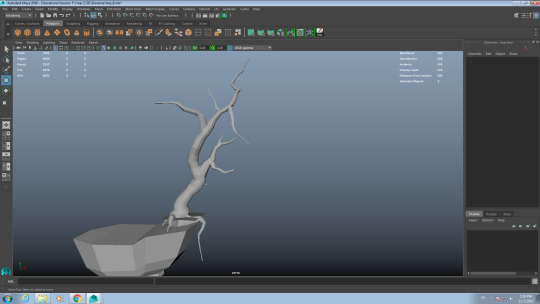
After making a super low poly model, I then exported it into Zbrush in three separate parts (the tree, the small island and then the main island). Using Zbrush, detail was added to the models as to make them more realistic.
The Main Island:

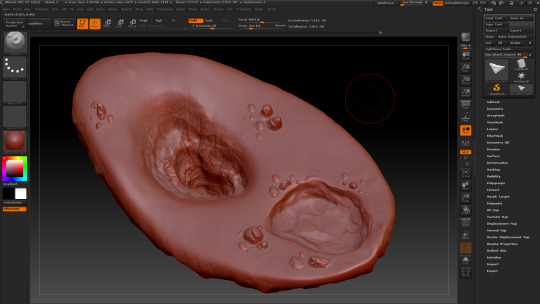
The Small Island:
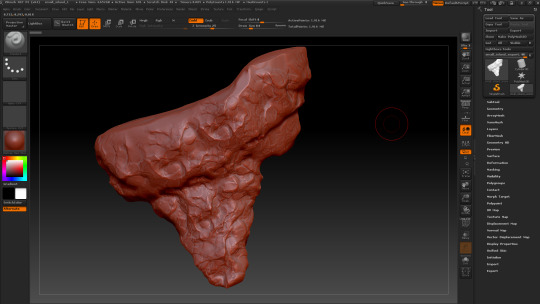
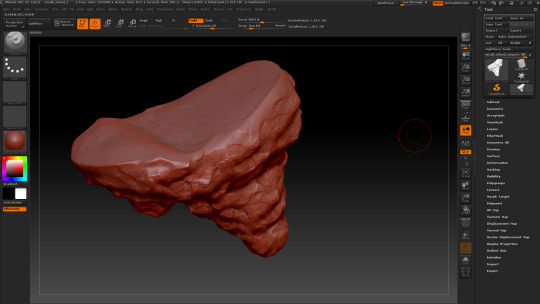
The Tree:
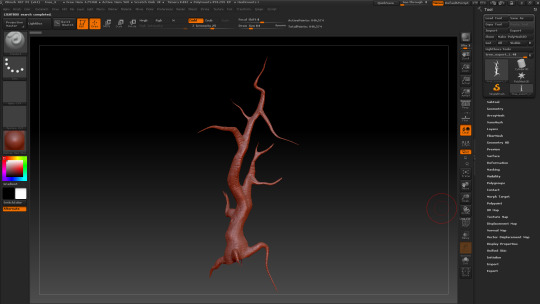
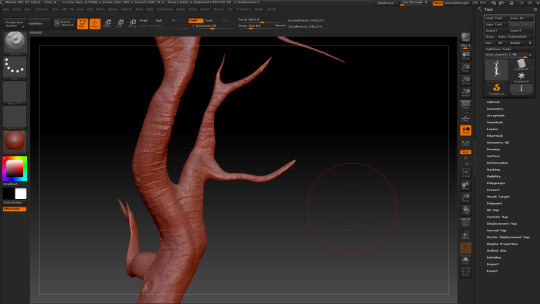

After I made the high poly, detailed versions of my diorama, I then made them a lot lower quality than the ones I had sculpted as to bring them back to Maya in preparation of being unwrapped.

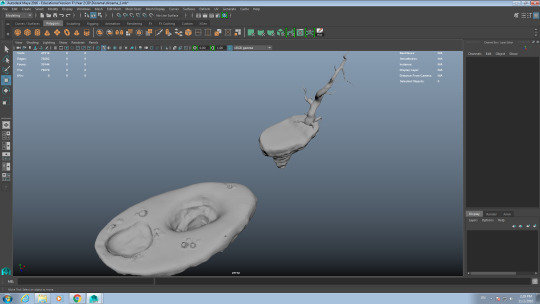
Now that its all put together in Maya, the next steps are to unwrap it so that I can take it into Substance Painter, where the information of the high poly models will be baked into the low poly models and then painted. After that, I will make the water for the pond, create the grass and petals/leaves for the tree.
1 note
·
View note
Text
DD2451 - Process of creating my diorama.
Starting off, I created a more refined illustration of my concept- a cherry blossom on a piece of land which has broken from and now floats above a block of land.

Then from this, I used as a rough template to begin building the tree, blocking out its shape by using a cylinder and extruding along the trunk.
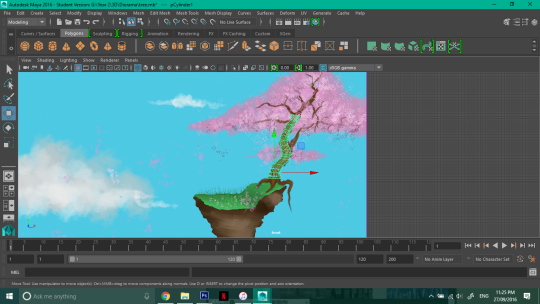
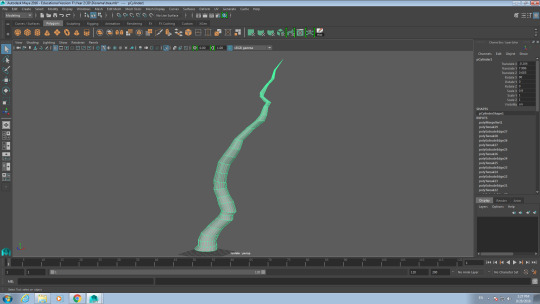
Then, using CV curves, I started to create branches which extrude from the branch.
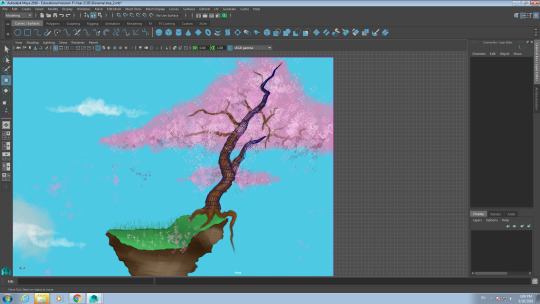
(to be updated...)
2 notes
·
View notes
Text
DD2451 - 3D Technical Art
For this module, the first assignment is to make an asset (20,000 tris) within a diorama. Out of the given themes, I have chosen ‘nature’ as I personally enjoy organic modelling to hard surface and feel like I would achieve more with something I enjoy more. Looking for inspiration and reference, I first looked at fantasy settings as I searching for something that revolved around an aesthetic and a concept rather than just general nature pictures.

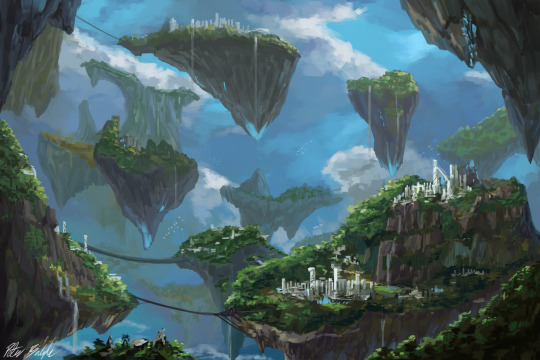
Although I stirred away from something that was fully fantasy, I did choose to keep one aspect and this was to have a section of the island float above the rest with my asset (a cherry blossom tree) on it.


For the scene itself, I wanted to avoid it being empty so I plan to include a small pond surrounded by rocks and maybe a few small animals such as rabbits. Though more may be added as the project has begun.

So far, I have come up with brief sketches of what I plan to create.


1 note
·
View note
Photo

‘The Unspeakable’
Pretty happy with it, though it could do with more work.
1 note
·
View note
Photo





Assignment 1 process - Jemima Humphries.
2 notes
·
View notes
Photo

Proportions of the human head reference sheet.
722 notes
·
View notes